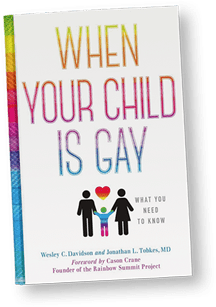Most parents and society-at-large don’t understand bisexuality. Sexuality is fluid, according to Freud. For a person having a bisexual orientation, the orientation is not chosen even though the sex of the partner may be. According to social psychologist Justin Lehmiller, Ph.D., author of The Psychology of Human Sexuality, being bisexual doesn’t necessarily mean that you are equally attracted to both men and women.
Many high school students today don’t like to be pigeonholed into binary roles. They want to label themselves. Cornell psychologist Rich Savin-Williams, Ph.D., author of The New Gay Teenager, says, according to a new study of his, “straight people don’t exist.” Your son or daughter may try out different orientations before one feels most comfortable.
Yet, even from the gay and lesbian community, bisexuals experience prejudice as they do from heterosexuals. They are looked upon as sexually confused and promiscuous. They are “on the fence” about their sexual orientation.
While the message for your child is similar to that of a LGT child: listen, don’t try to talk him/her out of their truth, love unconditionally, there are alarming statistics re: bisexuals that you should be aware of:
· The 2015 National Youth Risk Behavior Survey of U.S. High Students found that in the student risk behavior it examined (planning and attempting suicide), bisexual students reported the highest risk. According to The Bisexual Resource Center (BRC), 45% of bisexual women have considered or attempted suicide.
· Bisexuals face intense bullying and harassment and report poorer mental health outcomes than gay, lesbian or straight youth.
· Over a third of bisexuals reported not disclosing their sexual orientation to any medical provider.
· Young gay and bisexual males have disproportionally high rates of HIV, Syphilis, and other STDs.
· Adolescent lesbian and bisexual females are more likely to have ever been pregnant than their heterosexual peers.
· The Centers for Disease Control and Prevention found that 30% of students who had sexual contact with both sexes: experienced dating violence more than heterosexual and gay students.
However, it is not a good idea to dwell on the potential negativity your child may face. Here’s what you can do to lessen the impact:
In school:
· Make sure there is an ally who has your child’s back. Who knows at school of their bisexual orientation? Are his friends accepting or bullying? Does the school have abstinence-only sex education that doesn’t apply to non- heterosexuals? Don’t leave the sex discussions up to the school health teacher. See if the school has a GSA (Gay and Straight Alliance).
At home:
· Talk about protection from STIs. It will help your child make healthy choices. Also discuss consent of sexual relationships.
· As most schools have inadequate sex education and many teens are too fearful to tell their doctor that they are not cis-gender, it’s up to you, the parent to be the sex educator.
· Provide contacts for your child of the same age who have similar experiences such as PFLAG.
According to https://rewirenews/article/2018/04/04/high-risk-resources-bisexual-kids-lack-help-need-, there are many organizations that are aimed specifically at bisexual youth. However, The Bisexual Resource Center (BRC), in Boston, Massachusetts, America’s oldest national bisexual organization, has many resources. This month, the BRC is celebrating its sixth annual Bisexual Health Awareness Month (#BiHealth Month) https://bihealthmonth.org/. BRC is raising awareness about the bisexual + (bi, pansexual, fluid, queer, etc.), community’s social, economic, and health disparities, advocates for resources, and inspire actions to improve bi+ people’s well-being. This year’s campaign will focus on bisexual + representation in media, politics, and advocacy, healthcare, and education.

When Your Child Is Gay: What You Need To Know
For more detailed advice, see book, co-authored with a mother of a gay son and a psychiatrist, Jonathan L. Tobkes, M.D.